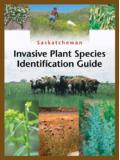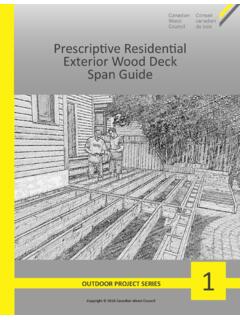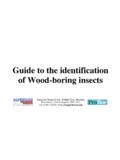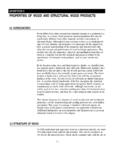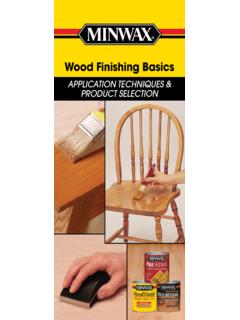Transcription of MATERIAL SAFETY DATA SHEET DRICON® FIRE …
1 MATERIAL SAFETY DATA SHEET DRICON FIRE RETARDANT TREATED WOOD AND LUMBER December 1, 2002 1. CHEMICAL PRODUCT AND COMPANY IDENTIFICATION Product Identifier: Dricon Fire Retardant Treated Wood And Lumber General Use: Treated Wood Products MANUFACTURER: TELEPHONE NUMBER: 800-356-7146 Conrad Forest Products 68765 Wildwood Drive North Bend, Oregon 97459 2. COMPOSITION / INFORMATION ON INGREDIENTS EXPOSURE LIMITS (mg/m3) HAZARDOUS INGREDIENTS PERCENT CAS # OSHA-PEL ACGIH-TLV ACGIH-STEL Boric Acid <5 10043-35-3 NA NA NA Guanylurea Phosphate <10 17675-60-4 NA0 NA NA Wood Dust* (softwood) (softwood) Formaldehyde** 50-00-0 1ppm 2ppm STEL *A state-run OSHA program may have more stringent limits for wood dust and/or PNOR.
2 Please contact your state for further details. **Only applies to Plywood Products 3. HAZARDS IDENTIFICATION Inhalation: Airborne treated or untreated wood dust may cause nose, throat or lung irritation. Various species of untreated wood dust can elicit allergic respiratory response in sensitized persons. Eye Contact: Treated or untreated wood dust may cause mechanical irritation. Skin Contact: Handling wood may result in skin exposure to splinters. Prolonged and/or repeated contact with treated or untreated wood dust may result in mild irritation. Various species of untreated wood dust can elicit allergic type skin irritation in sensitized persons.
3 Ingestion: Not anticipated to occur. Chronic Wood Dust (treated or untreated) Effects: Wood dust, depending on species, may cause dermatitis on prolonged, repetitive contact; may cause respiratory sensitization and/or irritation. 4. FIRST AID MEASURES Inhalation: Remove from wood dust exposure. If breathing has stopped administer artificial respiration. Seek medical aid if symptoms persist. Eye Contact: Gently flush any particles from the eyes with large amounts of water for at least 15 minutes. DO NOT RUB THE EYES. Seek medical aid if irritation persists. Skin Contact: Rinse wood dust off with water.
4 DO NOT RUB. Once the skin is free of the wood dust, wash thoroughly with soap and water. Seek medical aid if severe irritation develops. Ingestion: Rinse the victim's mouth out with water. Do not induce vomiting. If symptoms develop, call a physician or poison center at (800) 837-0496 (Outside the US call 1-404-616-9000). 5. FIRE FIGHTING MEASURES Flash Point NA Lower Explosive Limit NA Auto-ignition NA Upper Explosive Limit NA Extinguishing Agents: Not applicable Dricon Fire Retardant Treated Wood And Lumber Page 2 of 3 December 1, 2002 5. FIRE FIGHTING MEASURES CONT D Fire-Fighting Procedures: Fire from a separate fuel source may be intense enough to cause thermal decomposition releasing toxic fumes and/or gases.
5 Wear complete fire service protective equipment, including full-face NIOSH and NFPA approved self-containing breathing apparatus. Fire and Explosion Hazard: High airborne levels of wood dust may burn rapidly in the air when exposed to an ignition source. 6. ACCIDENTAL RELEASE MEASURES Spill or Leak Procedures: Not applicable. Waste Disposal: See Section 13. 7. HANDLING AND STORAGE Storage Conditions: Protect from physical damage. Maintain good housekeeping. Caution: DO NOT BURN TREATED WOOD. Whenever possible, sawing or machining treated or untreated wood should be performed outdoors to avoid accumulations of airborne wood dust.
6 Wash hands thoroughly before eating, drinking, using tobacco products, and/or using restrooms. NOTE: For plywood products only, provide adequate ventilation to reduce the possible buildup of formaldehyde vapors. 8. EXPOSURE CONTROLS / PERSONAL PROTECTION Respiratory Protection: None normally required. When sawing or cutting treated or untreated wood, wear a NIOSH approved N95 or better dust mask. Eye Protection: Wear SAFETY glasses with side shields or SAFETY goggles when sawing or cutting. Skin/Foot Protection: Leather or comparable gloves to prevent splinters. Long sleeve shirt, pants and steel toed shoes when handling treated or untreated wood.
7 Ventilation: Saw, cut or machine wood outdoors or in well ventilated areas. Ventilation should be sufficient to maintain inhalation exposures below OSHA PEL for particulates. Other Protective Equipment: Wear ear plugs or muffs when using power tools. NOTE: For plywood products only, if Formaldehyde vapor level exceeds OSHA PEL or STEL, then a NIOSH approved respirator is required. 9. PHYSICAL AND CHEMICAL PROPERTIES Appearance Natural Specific Gravity (Water =1) NA Odor None Boiling Point NA Solubility in Water NA Vapor Density (Air=1) NA Physical State Solid Vapor Pressure NA pH NA Freezing Point NA 10.
8 STABILITY AND REACTIVITY Conditions contributing to instability: None known. Incompatibilities: Strong acids, open flame and oxidizers. Hazardous Reactions/Decomposition/Combustion Products: Combustion products may include smoke, toxic fumes or gases. Hazardous Polymerization: Does not occur. 11. TOXICOLOGICAL INFORMATION Carcinogenicity Data: IARC has classified untreated hardwood and hardwood/softwood mix wood dust as a Group I human carcinogen. The wood dust classification is based primarily on IARC s evaluation of increased risk in the occurrence of adenocarcinomas of the nasal cavities and paranasal sinuses associated with occupational exposures to untreated wood dust.
9 NTP has classified all untreated wood dust as a carcinogen. Dricon Fire Retardant Treated Wood And Lumber Page 3 of 3 December 1, 2002 12. ECOLOGICAL INFORMATION No data available. 13. DISPOSAL CONSIDERATIONS Disposal Guidance: DO NOT BURN TREATED WOOD. Dispose of in accordance with local, state and federal regulations. Under RCRA, it is the responsibility of the user of the product to determine at the time of disposal, whether the product meets RCRA criteria for hazardous waste. This product is typically not considered a hazardous waste but State run waste programs may be more stringent. Check with your local or state regulators prior to disposal.
10 14. TRANSPORT INFORMATION DOT Hazardous MATERIAL Classification: This MATERIAL is not regulated as a hazardous MATERIAL by the DOT. 15. REGULATORY INFORMATION OSHA (29 CFR ): This product is regulated under the Hazard Communication Standard. RCRA (40 CFR 261): DO NOT BURN TREATED WOOD. Dispose of in accordance with local, state and federal regulations. Under RCRA, it is the responsibility of the user of the product to determine at the time of disposal, whether the product meets RCRA criteria for hazardous waste. This product is typically not considered a hazardous waste but State run waste programs may be more stringent.




